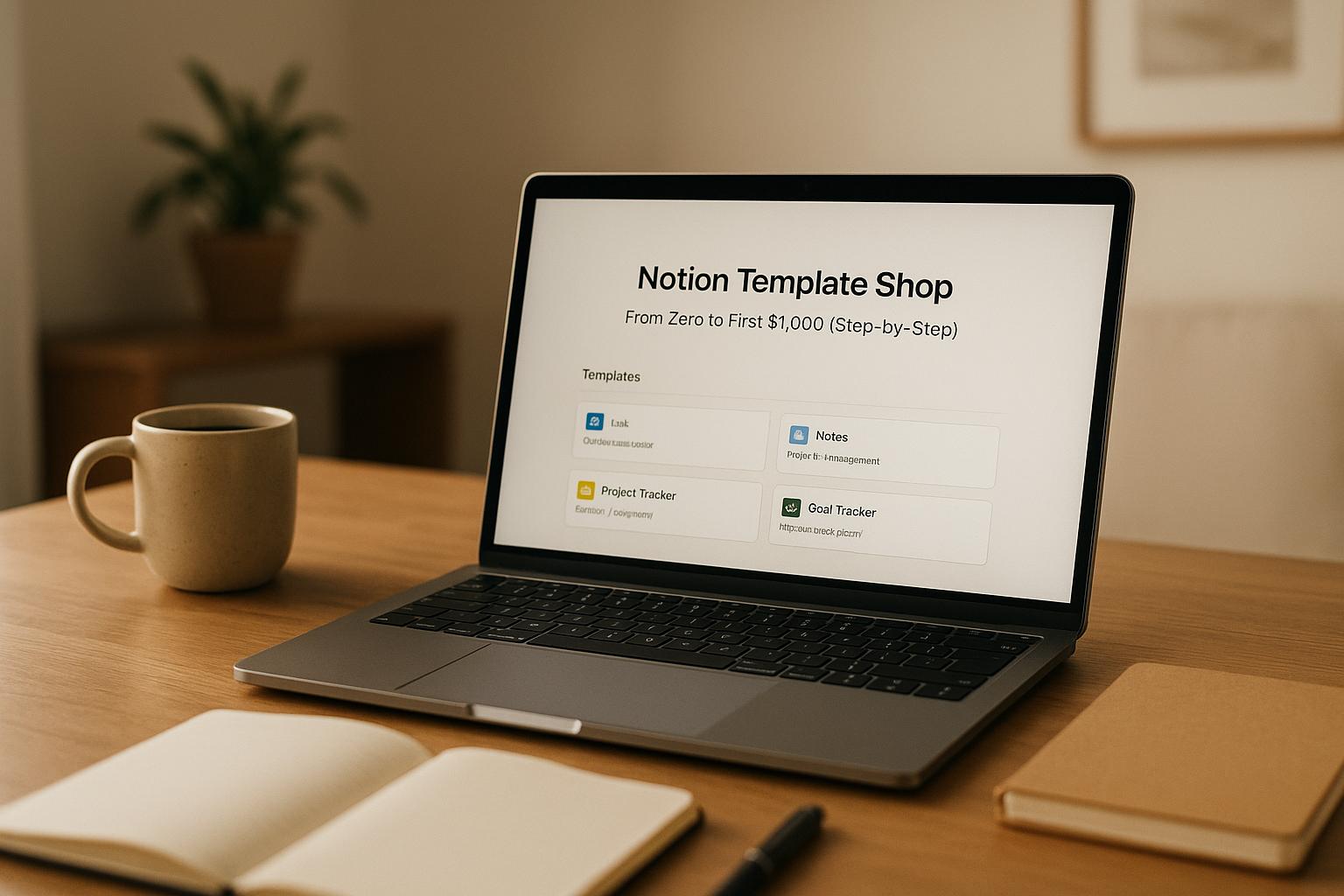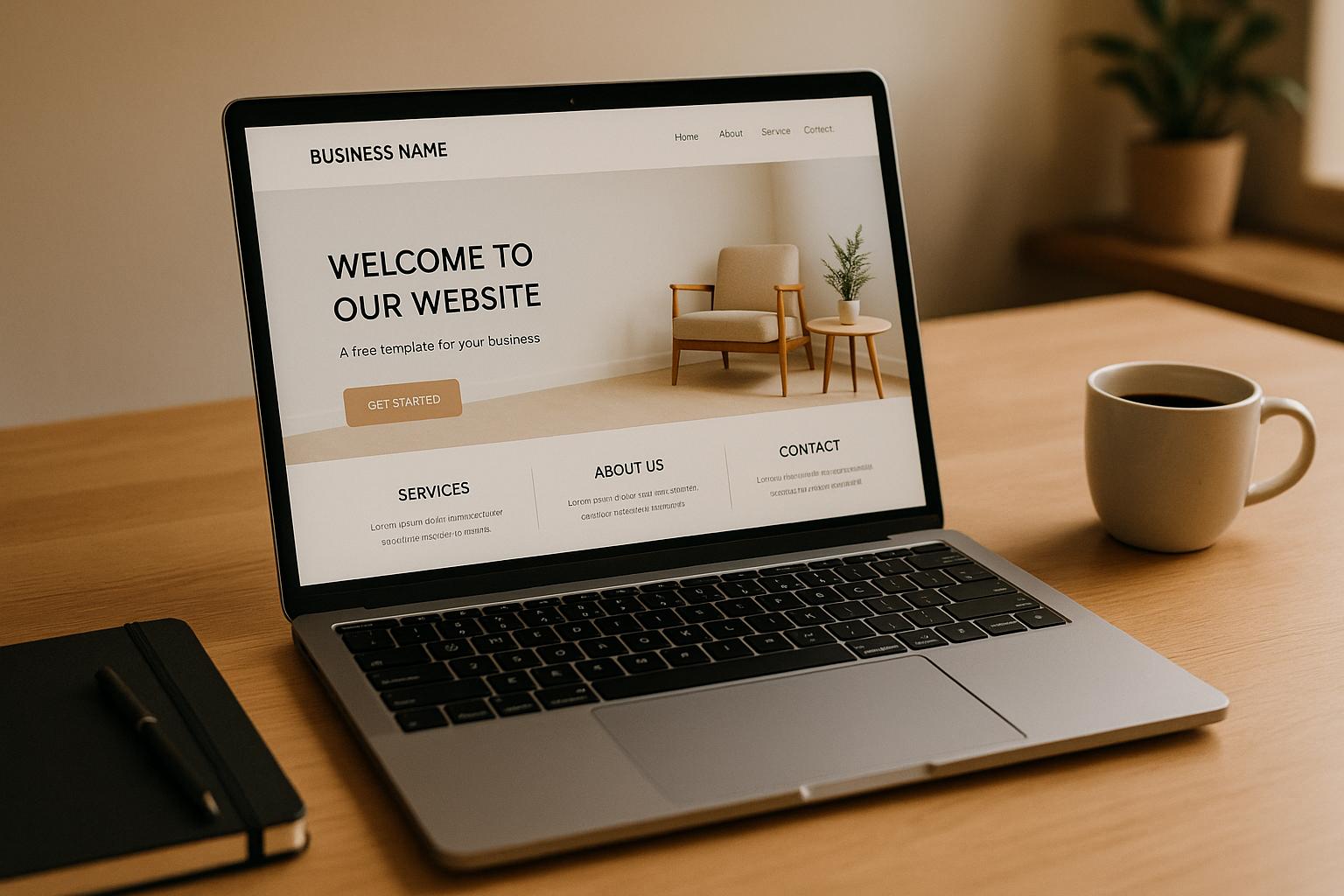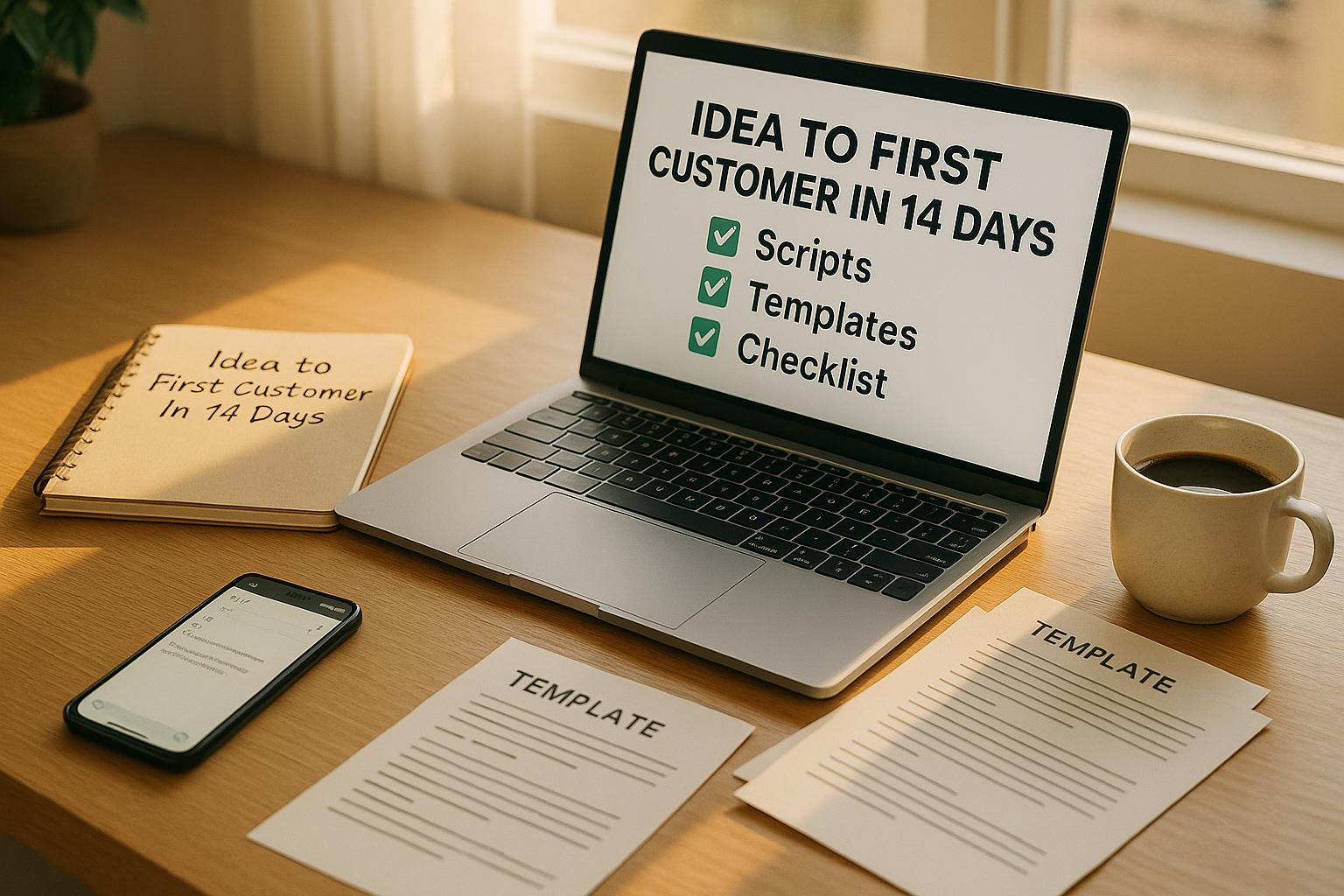
Want to land your first paying customer in just 14 days? This guide breaks down a clear, actionable plan to make it happen. By focusing on quick validation, targeted outreach, and practical tools, you’ll move from idea to revenue without overthinking or endless planning.
Here’s what you’ll do:
- Validate your idea (Days 1-4): Confirm it solves a real problem using tools like IdeaFloat’s Problem Validator and Consumer Insights.
- Size your market (Days 4-6): Assess revenue potential with market sizing and create a customer acquisition plan.
- Build and price your offer (Days 7-11): Define your product, set pricing, and create financial projections.
- Launch and secure your first customer (Days 12-14): Engage directly with your audience using pre-written scripts, templates, and a launch checklist.
With outreach scripts, pricing tools, and AI-powered insights, this 14-day roadmap ensures you focus on what matters: connecting with customers and driving results. Skip the guesswork and start seeing progress today.
How To Make Your First $1,000 Online in less than 14 days (Raw Step-By-Step Tutorial)
14-Day Plan: From Idea to First Customer
This 14-day roadmap guides you step-by-step from brainstorming your idea to landing your first customer. Divided into four phases, it builds momentum by layering tasks and using AI tools (introduced earlier) to streamline the process.
Phase 1: Test Your Idea
Days 1-4: Validate the Problem & Define Your Value Proposition
Start by ensuring your idea solves a problem that genuinely matters to people. Tools like IdeaFloat's Problem Validator can gauge how urgently customers care about the issue you're addressing. It identifies potential demand and flags any weak spots or hidden opportunities.
Dive into Consumer Insights to understand how your audience talks about their challenges. This research uncovers the exact words and phrases they use, which will later shape your marketing messages.
Conduct a Competitor Analysis to see who else is tackling this problem. This step helps you spot market gaps and refine your positioning to stand out.
Next, craft your Unique Value Proposition (UVP) using messaging frameworks. This concise pitch explains why customers should choose you, directly addressing the concerns and language revealed in your research.
Finally, set measurable goals to balance quick wins with long-term progress. Focus on metrics like Customer Acquisition Cost (CAC) and Customer Lifetime Value (CLV) to define what success looks like.
Phase 2: Size Your Market
Days 4-6: Assess Market Potential
Use Smart Market Sizing to calculate your Total Addressable Market (TAM), Serviceable Available Market (SAM), and Serviceable Obtainable Market (SOM). These figures provide a clear picture of your revenue potential and help validate your idea with investors or partners.
The tool also offers first-year projections, making it easier to discuss your market opportunity confidently.
Days 5-7: Plan Customer Acquisition
Develop a Go-to-Market Strategy that pinpoints where your ideal customers spend their time - both online and offline. This strategy becomes your roadmap for acquiring customers, complete with tailored channels and tactics.
Allocate your budget wisely by calculating acquisition costs for each channel. This ensures you focus on the most effective methods to reach your audience.
Phase 3: Create and Price Your Offer
Days 7-11: Build Your Offer and Set Pricing
Start with a Cost Analysis to calculate your monthly operating expenses, including everything from hosting fees to labor costs. Understanding these numbers helps you set pricing that covers costs and ensures profitability.
Use the Product & Service Creator to design your offerings. You can either create them manually or let AI generate options based on your research. Establish profitability targets using your cost analysis.
Leverage Advanced Pricing Research to find the sweet spot for your pricing. This step involves competitor comparisons and proven pricing models to maximize profits while staying competitive.
Develop a Financial Model to track revenue, expenses, and profit projections. This tool helps you evaluate your business idea's viability and identify potential cash flow challenges early.
Prepare detailed Financial Projections & Breakeven Analysis to determine your funding needs and timeline to profitability. These month-by-month projections clarify whether you’ll need external funding and how much to raise.
Break your plan into manageable, time-bound tasks. Start with your main goal and work backward, creating milestones to keep everything on track.
Phase 4: Launch and Get Your First Customer
Days 11-12: Build Your Brand Presence
Establish credibility by creating a professional logo and brand identity. Use tools to generate multiple logo options and develop brand guidelines, even without a designer.
Set up a waitlist page with compelling copy to capture emails before your launch. This page will serve as your main tool for generating early interest and pre-orders.
Days 12-14: Launch and Engage
Tap into the Community Launch Map to find online spaces where your target audience gathers. This tool provides pre-written posts designed to spark authentic conversations and drive traffic to your business.
Follow a detailed Launch Checklist to ensure every task is completed on time. This ensures a smooth launch and maximizes your impact.
Assign roles for each task to keep everyone accountable, and document workflows to maintain consistency. Conduct regular quality checks to track progress and make adjustments if needed.
As you execute your launch, focus on personal engagement. Respond promptly to inquiries and follow up with leads. Often, your first customer will come from these direct, one-on-one interactions rather than automated systems.
Ready-to-Use Scripts and Templates
Once you’ve mapped out your 14-day plan, these ready-to-use scripts and templates can make customer interactions smoother and more effective. Finding your first customer quickly often comes down to using the right words. These scripts take the guesswork out of conversations, helping you sound confident and professional from the start.
Customer Outreach Scripts
Cold Email Template for Problem Validation
Subject: Quick question about [specific pain point]
Hi [Name],
I see you work in [industry/role], and I imagine you might face [specific challenge]. I’m currently researching this area and would love to hear your thoughts.
Are you dealing with [specific problem]? If so, how are you managing it right now?
I’m not selling anything - just trying to understand if this is a real issue worth solving.
Would you have 10 minutes for a quick call this week?
Thanks,
[Your name]
LinkedIn Direct Message for Market Research
Hi [Name],
I came across your post about [relevant topic], and I’m working on something related to [specific challenge you mentioned].
Quick question: What’s the biggest frustration you experience with [current solution/process]?
No sales pitch - just gathering insights from professionals like you.
Phone Script for Customer Discovery
"Hi [Name], this is [Your name]. Thanks for taking the time to chat. I’m researching [problem area], and your experience would be incredibly helpful.
Let me start with this: When you think about [specific challenge], what’s the most frustrating part of your current process?
[Listen, then follow up]: How much time does that take up each week?
[Listen, then ask]: If there were a solution that could [specific benefit], what would that be worth to you monthly?"
Keep these calls short - 15 minutes max.
Pitch and Proposal Templates
One-Minute Elevator Pitch Framework
"You know how [target audience] struggles with [specific problem]? Well, [your solution] helps them [specific benefit] in [timeframe].
For example, [brief case study or example]. What makes us different is [unique advantage].
We’re looking for our first 10 customers to test this with [special offer]. Would you be interested in hearing more?"
Email Proposal Template
Subject: Solving your [specific problem] - 5-minute read
Hi [Name],
From our conversation, I understand you’re spending [time/money] on [current process], which is causing [specific pain point].
Here’s what we propose:
The Problem: [Restate their exact words about the challenge]
Our Solution: [Your product/service] that delivers [specific outcome]
What You Get:
- [Benefit 1 with specific metric]
- [Benefit 2 with time savings]
- [Benefit 3 with cost reduction]
Investment: $[amount] per month
Next Steps: Let’s schedule a 30-minute demo this week to show how it works for you. Are you available Tuesday at 2 PM or Wednesday at 10 AM?
Best,
[Your name]
Partnership Proposal Template
Hi [Name],
I’ve been following [their company] and noticed your focus on [their goal/initiative].
We’re introducing [your solution], designed to help [target audience] tackle [problem]. Since your customers likely face this issue too, I think there’s potential for a partnership.
Here’s what we’re thinking:
- We handle [specific service] for your customers
- You receive [percentage]% of revenue or [specific benefit]
- Your customers gain [specific value] at no extra cost
Would you be open to a 15-minute conversation to explore this further?
Survey and Feedback Forms
Pre-Launch Interest Survey
"We’re developing [solution] to help [target audience] address [problem]. Your input would be invaluable (just 2 minutes):
- How often do you deal with [specific challenge]?
- Daily
- Weekly
- Monthly
- Rarely
- What’s your biggest frustration with current solutions?
- If we could solve this for $[price range] per month, would you be interested?
- Definitely
- Maybe
- Probably not
- What’s your email? (We’ll send you early access when it’s ready)"
Post-Demo Feedback Form
"Quick feedback:
- What did you like most about what you saw?
- What concerns do you have?
- On a scale of 1-10, how likely are you to use this?
- What would need to change for this to be a definite yes?
- When would you want to start using this?
- This week
- This month
- Next quarter
- Not sure yet"
Pricing Validation Survey
"Help us fine-tune our pricing:
Current situation: How much do you currently spend monthly on [current solution/process]?
Value question: If [your solution] saved you [specific time/money], what would that be worth monthly?
Price testing: Which pricing feels most reasonable?
- $[low option] - Basic features
- $[medium option] - Full features
- $[high option] - Full features + support
Budget reality: What’s your monthly budget for this type of solution?"
These templates are effective because they focus on the customer’s perspective rather than just listing product features. Tailor the language to align with how your audience talks about their challenges. The more specific you are, the better your results will be.
Next, we’ll dive into AI-powered strategies to refine your business idea and optimize your approach.
sbb-itb-08dd11e
AI-Powered Validation Tools and Methods
IdeaFloat's AI tools streamline the validation process by combining customer feedback with data-driven insights. This approach helps you decide whether to move forward with an idea or pivot early, ultimately saving time and resources. These tools seamlessly build on the steps discussed earlier.
Problem Validator and Consumer Insights
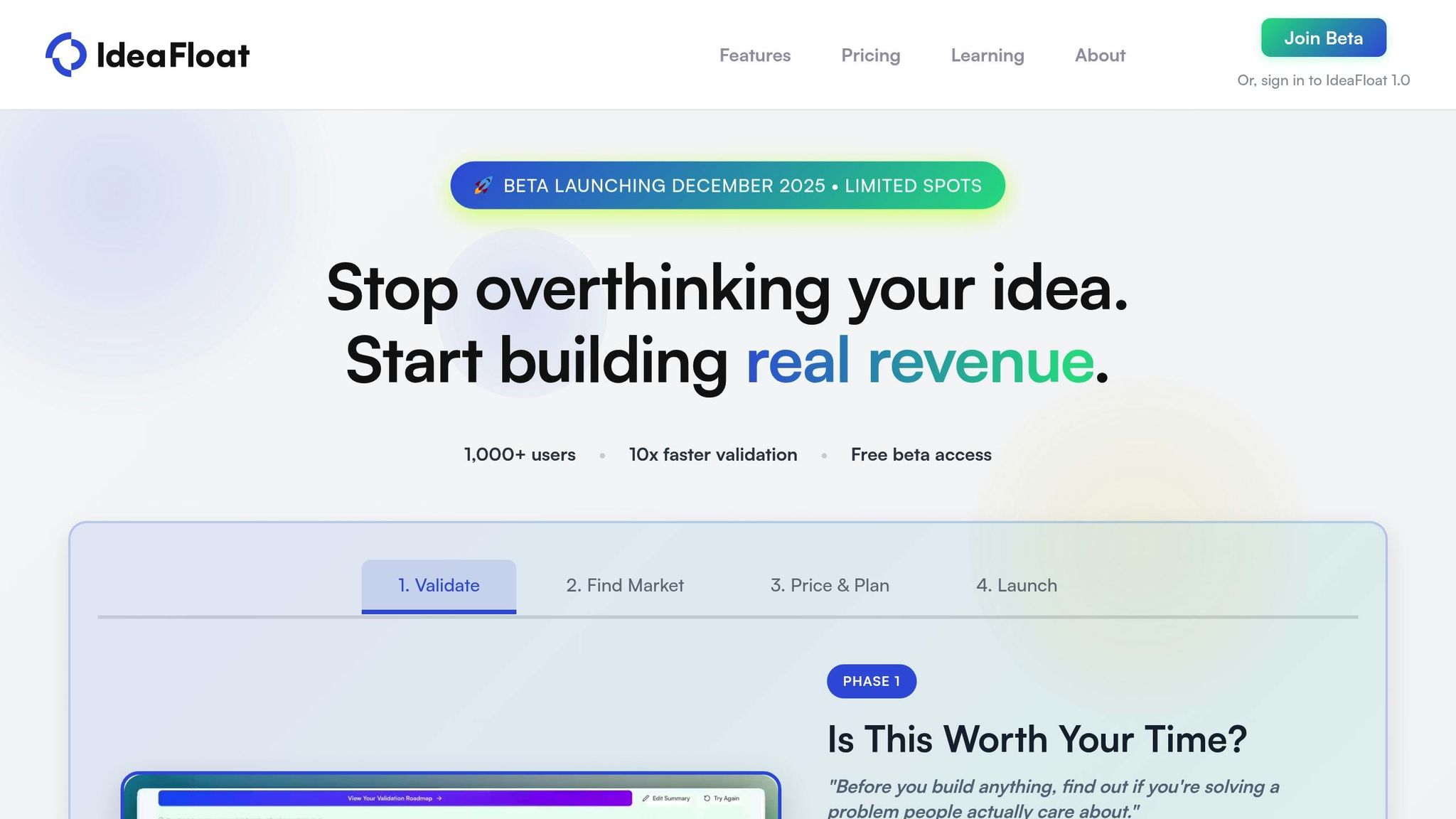
The Problem Validator tool from IdeaFloat evaluates whether your idea addresses a genuine problem that people are willing to pay to solve. It measures urgency, identifies weak signals, and outlines actionable next steps. The tool provides a structured workflow that prioritizes factors like the immediacy of the need and early market indicators.
Meanwhile, the Consumer Insights feature analyzes online discussions to uncover how customers talk about their needs and concerns. This allows you to refine your messaging and outreach to resonate directly with your target audience. Once you've validated the problem and tailored your messaging, the next step is to assess your competition.
Competitor Analysis
Using AI, IdeaFloat scans the web to identify businesses tackling similar challenges. It highlights gaps in the market, helping you uncover underserved segments. This competitive analysis ensures you can position your offering as the go-to solution for potential customers. With this foundation, you can then focus on market sizing and pricing strategies.
Smart Market Sizing and Pricing Research
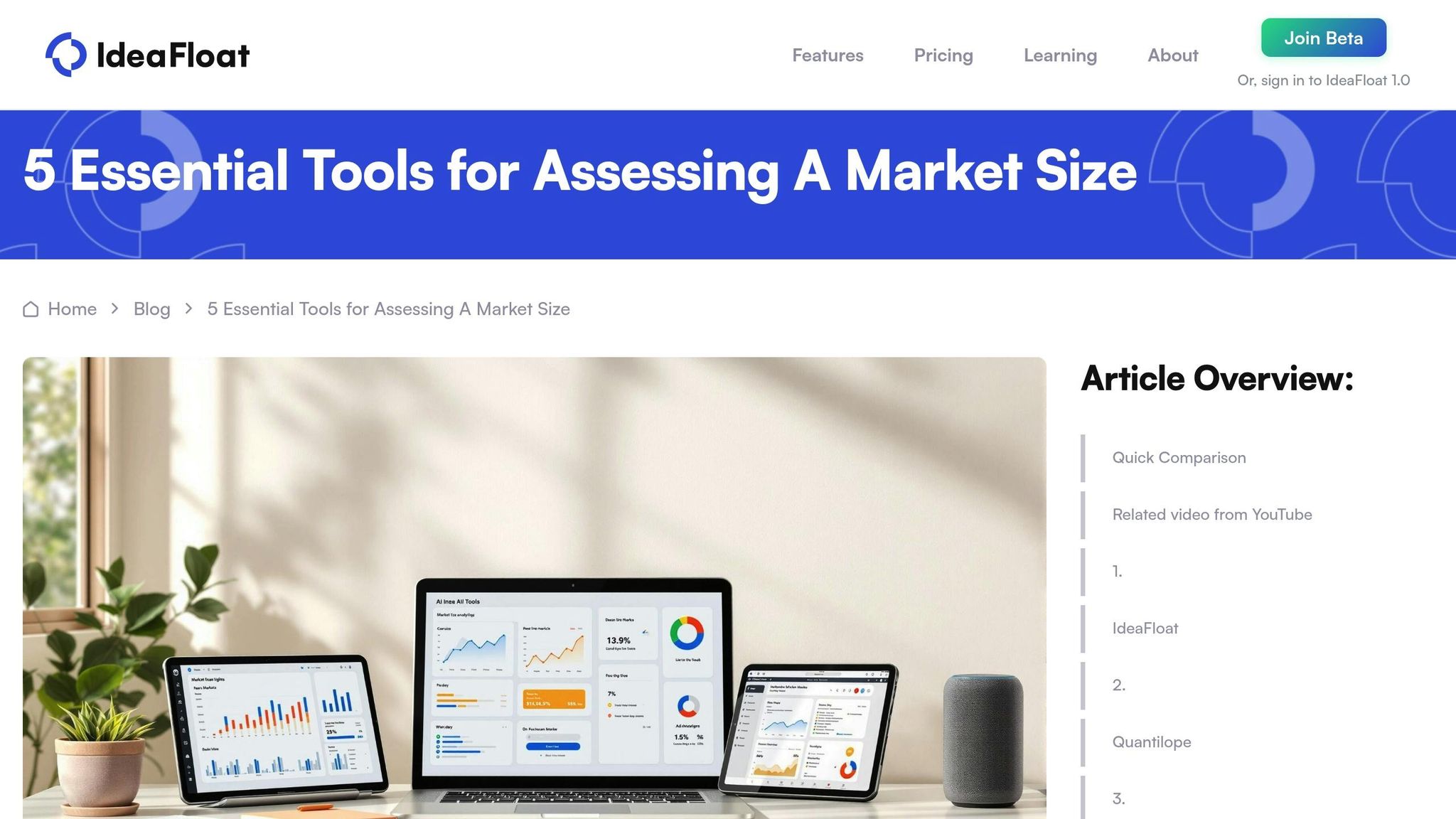
Building on your research, Smart Market Sizing estimates market potential using the TAM/SAM/SOM framework. This method provides accurate, evidence-based projections, helping you set realistic growth goals.
The Pricing Research tool evaluates current market prices and uses proven pricing models to fine-tune your strategy. Whether you choose to let AI adjust pricing automatically or make manual adjustments based on competitive insights, this tool helps you identify pricing opportunities across different tiers and understand industry patterns.
Launch and Progress Checklist
Once your idea is validated, it’s time to roll out your 14-day plan. This checklist breaks down your research into actionable daily tasks, helping you move from validation to landing your first customer.
Daily Tasks and Milestones
Days 1-3: Laying the Groundwork
Start by running the Problem Validator to pinpoint urgency signals and challenges. Dive into Consumer Insights to analyze online conversations and capture the language your potential customers use. Then, conduct a Competitor Analysis to map out the competitive landscape and uncover untapped opportunities.
Your milestone: A validated problem statement supported by evidence of customer interest, along with a detailed list of competitors and identified market gaps.
Days 4-6: Exploring Market Potential
Use Smart Market Sizing to calculate your Total Addressable Market (TAM), Serviceable Available Market (SAM), and Serviceable Obtainable Market (SOM). Pair this with Advanced Pricing Research to determine market price ranges and identify the sweet spot for your offering.
Your milestone: Documented market size estimates and a preliminary pricing strategy that aligns with your competitive positioning.
Days 7-9: Validating Product and Financials
Run a Cost Analysis to estimate monthly operating expenses. Use the Product & Service Creator to define your product lineup and calculate the sales volume needed for profitability. Build out your Financial Model to project revenue and expenses.
Your milestone: A clear financial plan, including a break-even analysis and monthly sales targets.
Days 10-12: Branding and Launch Prep
Develop your brand identity using the Logo Generator and create a high-conversion Waitlist Page. Leverage the Community Launch Map to identify active online platforms and schedule custom posts for engagement.
Your milestone: A fully developed brand identity, a live landing page, and a curated list of online communities ready for your launch.
Days 13-14: Launch and Execute
Activate your Launch Checklist to coordinate all moving parts. Post in targeted communities and follow up with warm leads using pre-prepared outreach scripts.
Final milestone: Secure your first paying customer or a confirmed pre-order.
Stay aligned with IdeaFloat's tool deadlines to maintain momentum throughout the process.
Tool Integration and Deadlines
To keep things on track, align each task with specific tool deadlines. Start with the Problem Validator, followed by Consumer Insights and Competitor Analysis, all to be completed within the first three days. By day 6, wrap up market sizing and pricing research. Financial models should be finalized by day 9, leaving plenty of time for branding and launch preparation.
After completing market sizing, use the Go-to-Market Strategy tool to identify the most effective channels and tactics. This will also help you estimate your customer acquisition costs and set a realistic launch budget.
Tracking Progress and Making Adjustments
Focus on tracking three key metrics: validation confidence, market response, and conversion rate.
- Validation confidence: Document findings that confirm or challenge your initial assumptions as you use IdeaFloat's tools.
- Market response: Keep an eye on outreach effectiveness, such as the ratio of community engagement to landing page visits and the percentage of visitors who share their contact information.
- Conversion rate: Measure how many early conversations turn into purchase commitments. If conversion rates are low, revisit your pricing or refine your value proposition.
Be ready to adjust your approach based on the data you collect. For example, if Consumer Insights reveal that your audience uses different terminology, update your landing page copy immediately. Similarly, if Pricing Research shows that your rates are off, tweak them before moving forward.
If uncertainties remain about market fit or pricing, extend your validation phase rather than rushing into a launch. Starting strong is always better than starting prematurely.
Conclusion
Turning your business idea into a paying customer within just 14 days might sound ambitious, but with AI-powered tools and a clear plan, it’s entirely doable.
This 14-day framework simplifies what usually takes months by breaking it into focused steps: understanding the problem, assessing the market, crafting a compelling offer, and launching to real customers. It’s all about making informed decisions backed by data.
AI tools have completely changed the game for entrepreneurs. Instead of spending weeks conducting manual research, AI can analyze massive amounts of data in minutes. This speed gives you the freedom to test ideas quickly, adjust as needed, and engage with customers faster than ever before.
To make things even easier, scripts, templates, and checklists are available to help you communicate effectively. These resources remove the guesswork and provide tried-and-tested frameworks to turn conversations into sales without wasting time.
The key to success lies in starting strong with proper validation and using real-world feedback to refine your approach. The 14-day timeline encourages action, prioritizing progress over perfection.
Keep track of three critical metrics throughout the process: how confident you are in your validation, how the market responds, and your conversion rate. These indicators will show whether you’re on the right track or need to tweak your strategy before moving forward.
FAQs
How can I make sure my business idea solves a real problem people will pay for?
To make sure your business idea tackles a problem people are ready to pay to solve, start by pinpointing the issue you aim to address and identifying who it impacts. Speak directly with potential customers to uncover their challenges and verify that your proposed solution aligns with their needs. Asking open-ended questions can help you gather honest, valuable insights.
Once you’ve clarified the problem, take the next step by testing your idea with a minimum viable product (MVP) - a simplified version of your product or service. This might be as straightforward as a basic landing page, a prototype, or a demo. Use this MVP to gather feedback from early users, focusing on metrics like engagement, interest levels, and whether they’re willing to pay. This feedback will help you validate demand and fine-tune your offering.
Lastly, measure the market demand by analyzing how customers respond and behave. Signs like pre-orders, sign-ups, or enthusiastic feedback can indicate that people are genuinely interested in your solution and are prepared to invest in it.
What’s the best way to connect with potential customers and make your first sale during the launch phase?
To land your first sale during the launch phase, start by getting to know your target audience inside and out. Understand who they are, what challenges they face, and how your product or service can make their lives easier. This understanding will shape your approach and ensure your efforts hit the mark.
Next, focus on connecting directly with potential customers. Send personalized messages that show you genuinely understand their needs and how your offering can help. Don’t overlook the power of your personal network - ask friends, family, or colleagues for referrals to broaden your reach. Adding some buzz to your launch can also help; try offering limited-time discounts, promotions, or exclusive perks to nudge early buyers into action.
Lastly, make customer service your top priority. Every interaction matters. A great experience can turn first-time buyers into loyal advocates who spread the word about your business.
How can AI tools help with market sizing and pricing strategies for new businesses?
AI tools make market sizing and pricing strategies much more efficient by processing massive datasets to reveal trends, customer behavior, and competitor pricing patterns. These insights help businesses determine the best price points by considering factors like production costs, market demand, and customer preferences. The result? A pricing strategy that balances profitability with staying competitive.
On top of that, AI introduces dynamic pricing, which lets businesses tweak prices in real time based on shifts in demand, inventory levels, or competitor actions. This kind of flexibility keeps pricing in sync with market conditions, offering startups and newer businesses a valuable advantage during their early growth stages.
Related Blog Posts
Get the newest tips and tricks of starting your business!

